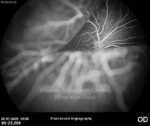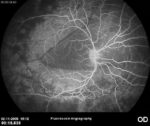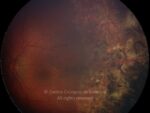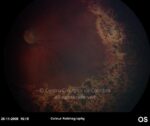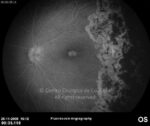Familial exudative vitreoretinopathy (FEVR) is a vitreoretinal dystrophy of autosomal dominant inheritance. It is more common in the first decade of life. Although it is bilateral, development is asymmetrical.
It is characterized by alterations in the vitreoretinal interface and peripheral ischaemia usually in the temporal area.
FEVR is differentiated into three clinical stages: in Stage I, patients are asymptomatic and there is modification of the vitreoretinal interface and retinal peripheral avascular areas; Stage II is a proliferative and exudative stage, in which neovascularization and fibrovascular proliferation and sub and intraretinal exudation can be observed; in Stage III, the injury scar causes scarring, tractional and rhegmatogenous retinal detachment, and sickle folds.





